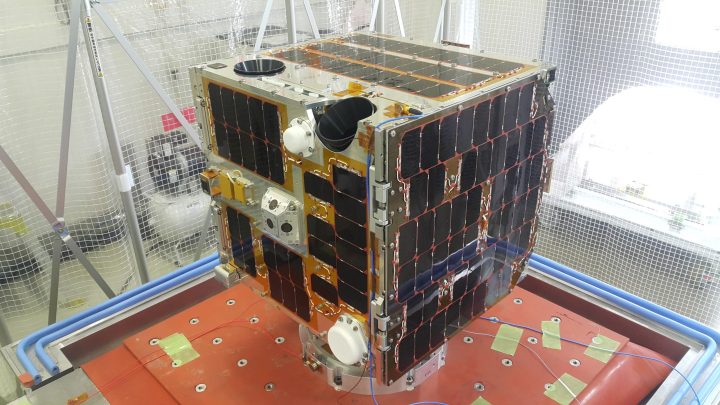The Philippine Space Agency (PhilSA) recently launched SIKAP+, which stood for the Space Infrastructure, Know-How, and Applications Acceleration through Promotion and Training project, in aims to expand scientific research and cooperation among Asian nations.
“In terms of space, the SIKAP+ aims to teach countries that are yet to work on space industry. We will teach them how to control a satellite, how to process data from it, how to establish amateur ground receiving stations to be used in communication,” said Shielo Muta, Chief Science Research Specialist of PhilSA’s Space Mission Control and Operations Division, in an interview with the Philippine News Agency last Wednesday.

Made possible through a grant of EUR 149,356 (approximately PHP 8.38 million) from the Trans-Eurasia Information Network Programme (TEIN*CC) of the Asi@connect Project funded by the European Union (EU), the project will run until 2023 with the cooperation of the Department of Science and Technology Advanced Science and Technology Institute (DOST-ASTI) and the University of the Philippines Electrical and Electronics Engineering Institute (UP EEEI).
“Asi@Connect Project is designed to support developing countries in Asia so that they can stand on their feet in the field of network and ICT, and related fields. Especially it focuses on R&D network and communities by providing dedicated regional high capacity and high-quality internet network,” explained June Lee, TEIN*CC Project Management Team Application Project Officer.
The Asi@Connect partners such as Bangladesh, Cambodia, Myanmar, and Nepal have already expressed interest in space technology. They would likely be among the nations to be taught by the Philippines through this project.

SIKAP+ also complements the Ground Receiving and Science Product Development (GRASPED) and the Space Science and Technology Proliferation through University Partnerships (STeP-UP) components of the STAMINA4Space Program. To recall, it is the space research and development program implemented by DOST-ASTI and UP Diliman intended to sustain the local scientific-industrial base for space technology and applications.
The aforementioned projects undertake the ground facilities’ data processing, distribution, and operations for the Filipino small satellites, namely Diwata-2, Maya-2, Maya-3, and Maya-4. These also interface, respectively, with the Asian Microsatellite Consortium (AMC) for the sharing of satellite data and ground infrastructure, and the Joint Global Multi-Nation Birds Satellite (BIRDS) Network for nanosatellite development and operations.
“The project envisions creating a community among new entrants and existing space actors in the region by raising awareness about the benefits of space technologies for sustainable development that recognizes the varying levels of investments in each country,” said PhilSA Space Information and Infrastructure Bureau Director Dr. Ariel C. Blanco.

In another milestone for the agency, the contract for the Comprehensive and Sustainable Master Development Plan to develop PhilSA’s future home had been signed according to a press release earlier this month.
A joint venture composed of T.A.M. PLANNERS CO., PhilKoei Int’l, Inc., and Nippon Koei, LTD. would be tasked to accomplish the project at a 30-hectare site located in the Clark Special Economic Zone (CSEZ). Their proposal amounted to over PHP 52.6 million, the Highest Rated Responsive Bid. Until completion, PhilSA continues to hold office at the UP EEEI in Quezon City.
The Philippine Space Agency was formed by virtue of Republic Act No. 11363, also known as the Philippine Space Act. The law took effect as of September 2019. The new PhilSA site would be in accordance to Section 17 of this law:
A land area equivalent to at least thirty (30) hectares out of the vast land which are under the administration of the Bases Conversion and Development Authority (BCDA) within the Clark Special Economic Zone in Pampanga and Tarlac, shall be allocated exclusively for the PhilSA office and its research facilities: Provided, That the PhilSA shall establish additional offices, research facilities, and launch sites in strategic areas as it may deem necessary: Provided, That the boundaries and technical descriptions of these land areas shall be determined by an actual and joint group survey.
Meanwhile, two satellite projects are currently in the works for the Philippines. Maya-5 and Maya-6, the cube satellite (cubesat) set which preliminary design review had been presented as of 2021, would be targeted for launch this year. Multispectral Unit for Land Assessment (MULA), on the other hand, would be on track to be the heaviest Filipino satellite yet at 130 kilograms. In comparison, it would be heavier than Diwata-1 and Diwata-2 combined. The preliminary design review for MULA ended last year. 2023 would be the target date for its launch.

























